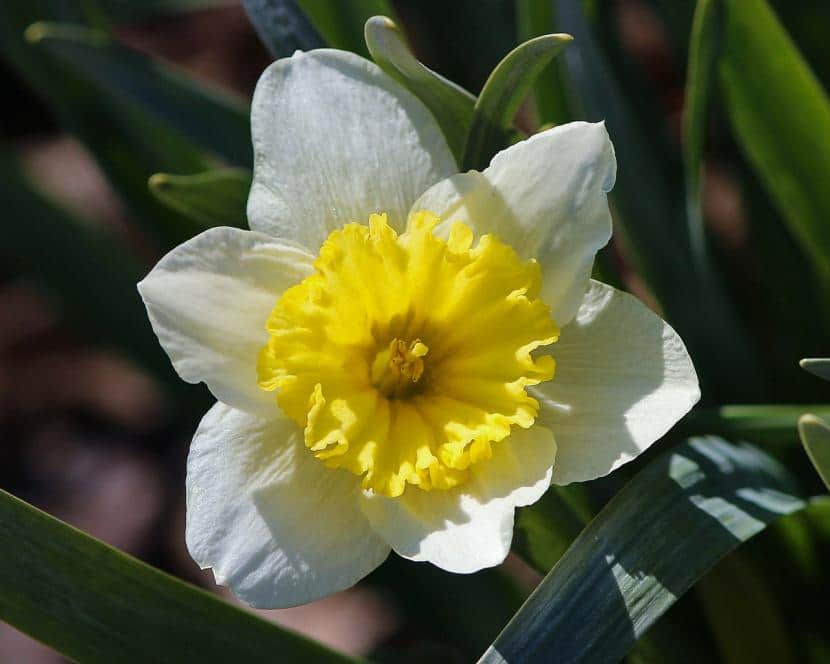
As the days grow shorter and the temperature begins to cool, it’s time to plant the bulbs that will bloom next spring. One of them is the narcissus, plants whose flowers will brighten up wherever they are.
If you do not know how to care for daffodilsTake note of our advice.

The daffodil is a bulbous plant native to Europe and the Mediterranean region. It belongs to the Amaryllidaceae family, like other equally beautiful flowers, the Amarillys. Although practically all species bloom in spring, there are some that do so in early summer, such as the poetic narcissus. They grow to a height of about 30-35cm, with long, thin, dark green leaves.
In gardening they can be used as an outdoor plant, either in planters or directly planted in the ground; or also as an indoor plant, where it should not lack light. And it is that, having a rather small size, it makes it possible to place it anywhere. What’s more, can be used as cut flower -without joining them with flowers of other species, since daffodils emit a substance that causes them to wither quickly-, since they last quite a long time.

The narcissus bulb is planted in autumn, when temperatures are below 30ºC, and it blooms after about four months, in the middle of the spring season. You can enjoy the beauty of its flowers for almost three weeksas long as the minimum temperature does not drop below 15ºC. Although it supports very mild, short-term frosts, the ideal is to grow it in temperate climates.
As a substrate you can use compost with perlite, or black peat. It must be kept moist, but avoiding waterlogging. It is highly recommended to do preventive treatments with natural fungicides -such as copper lainco or sulfur- so that the fungi do not damage the bulbs during the rainy season.
Are you going to plant daffodil bulbs this season?
